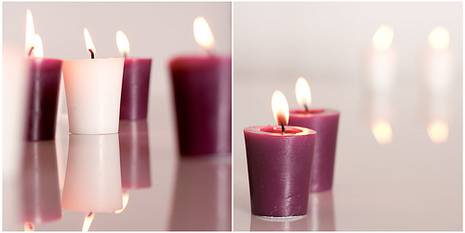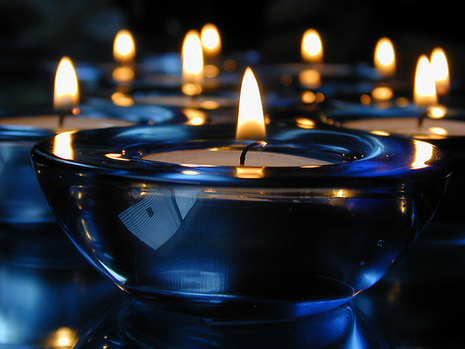Did you know there was a National Candle Association? Me either. Anyway, according to a survey conducted by the NCA, 75% of candle consumers say that scent is a very important factor when purchasing candles. They needed a study for to figure this out?
So Many Candles; Just One Nose
The surge in candle and candle scent appreciation has blossomed into quite the business. Currently, there are more than 10,000 different scents of candles available to the open market. This wide variety can be distilled to five different categories of fragrances.
Candle Classes
Kitchen Confidential
This group includes vanilla, which is has been for years the most popular scent of candles, as well as vanilla-based candles, also known in the candle business as ‘edibles.’ These include scents such as sugar cookie, hazelnut and coffee.
Fruit-i-licious
After vanilla, this is the most popular of candle scents. They include citrus and apple scents. Their fragrance ‘notes’ can be ‘light and breezy to warm and comforting.’
Flower Children
This group is generally considered ‘soft and light’ to the noses who know. In it we find rose, lilac, and all those other flowering plants that make me sneeze.
Zen-sational!
The zen/spa group includes fragrances such as ylang ylang, eucalyptus and sandlewood.
Fantasy Follies
According to the NCA, this category is hard to describe. Probably because the scents that fall into this group don’t have an obvious scent association. They are, however, an increasingly popular category. They include fragrances such as spring breeze, clean laundry and rain.
Candles and Mood
Most people correlate scented candles with aromatherapy, but according to the NCA, ‘most fragranced candles are not true “aromatherapy” candles.’ This is because they do not contain the necessary essential oils (or enough of them) to realize true aromatherapy effects. However, most scented candles do produce a psychological effect. The study of which is known as ‘aroma-chology.’ That being said, research seems to suggest that charts used to summarize the benefits of essential oils can be used to help us determine what candle scents might help enhance our moods.

Mood Manipulators
Here’s a list of some of some common candle scents and the moods they may alleviate.
- Anger: Jasmine, Orange, Patchouli, Rose, Ylang Ylang, Lavender
- Anxiety: Lavender, Patchouli, Chamomile, Rose, Sandalwood, Orange, Ylang Ylang
- Confidence: Jasmine, Orange
- Depression: Jasmine, Lavender, Lemon, Orange, Rose, Sandalwood, Ylang Ylang, Cinnamon
- Fatigue: Jasmine, Lemon, Patchouli, Peppermint, Sandalwood, Pine, Clove
- Fear: Jasmine, Lemon, Orange, Sandalwood, Vanilla, Clove, Lavender
- Frustration: Orange
- Grief: Rose, Sandalwood
- Insecurity: Jasmine, Sandalwood
- Insomnia: Lavender
- Irritability: Lavender, Sandalwood, Vanilla, Orange, Ylang Ylang
- Loneliness: Rose
- Panic & Panic Attacks: Lavender, Rose, Ylang Ylang
- Stress: Jasmine, Lavender, Patchouli, Rose, Sandalwood, Ylang Ylang, Vanilla
- Tension: Lemon, Orange
And for states of being we may want to encourage, consider these scents.
- Courage: Clove
- Creativity: Cinnamon
- Happiness & Peace: Lemon, Orange, Rose, Sandalwood, Ylang Ylang, Honeysuckle
- Inner Peace: Coconut, Sandalwood
- Mental Focus: Eucalyptus
- Positive Outlook: Orange
- Sexual Arousal: Orange, Patchouli, Ylang Ylang
(Scent data accumulated from Aroma Web and Earth Solutions.)
“Blue candles” courtesy of suncrest45 and “candles” courtesy of okay then at flickr.
